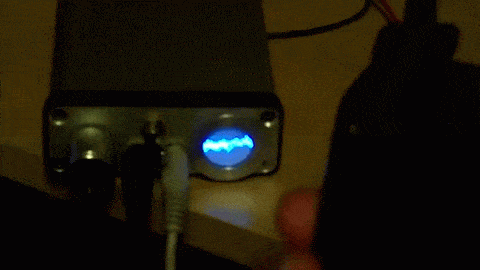
Most of us listen to headphones by simply plugging them into our phones, MP3 players, or whatever source is handy. If, however, your phone isn’t pumping out enough power, you can always buy an amplifier. Or, if you’re Justin Yates, who has a degree in both electrical engineering and computer science, you can build your own. In Yates’ case, he decided to add a tiny cathode ray tube display salvaged from an old camcorder to his design to function as an oscilloscope.
Yates was inspired to build this amazing work of functional art simply because he “needed an amp, and wanted to add some kind of ‘personal flair’ to it.” A tiny display for the waveform being played certainly meets this requirement, and the excellent Hammond enclosure that everything resides in sets it off quite nicely.
While the little oscilloscope scanning at 75 hertz via custom circuitry is fascinating (extremely fascinating), in the end what really matters with an amplifier is the sound quality. According to Yates, “Audio quality is exactly what you’d expect from a op-amp/MOSFET buffer based headphone amp. Not $1000 headphone amp audiophile good (if there is such a thing), but not cellphone/iPod bad either.” I never thought that iPod quality was too bad myself, but maybe I haven’t listened to the correct source!
Yates reportedly took several months to build this contraption, working around his other responsibilities. Cost is estimated at $100 (if everything was purchased new), but he was able to scavenge most of it from electronics parts that he already had.
Astute observers may notice a second enclosure below the one that houses the “robo-eye” oscilloscope in the last picture. This is meant to house batteries for portability, as well as a digital to analog converter (DAC) to use a phone as a USB audio source. This part is currently disassembled, however, so don’t expect to see it in public any time soon!
(via Reddit)
ADVERTISEMENT










